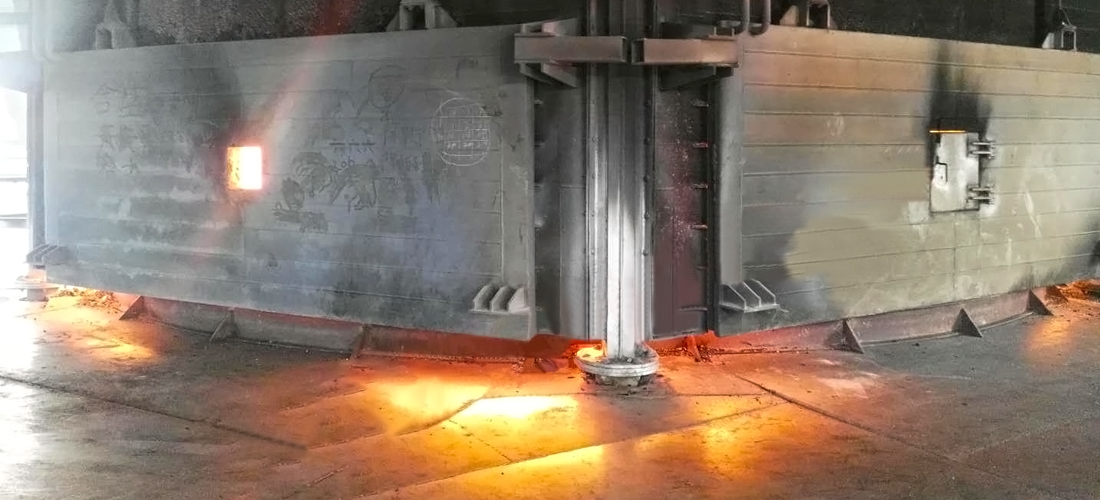08 03 24

Submerged arc furnaces is also an industrial electric arc furnace used in various industries to produce metals such as ferroalloys, silicon and calcium carbide. Its an important part of the smelting and manufacturing process of ferroalloys, nickel-chromium alloys and non-ferrous metals, and is able to transform raw materials into valuable metal products.
The operating principle of SAF is to use electric current to pass through a conductive material (called charge) immersed in a molten pool. The molten pool usually consists of a combination of flux and solid reducing agent. The high temperature reached in the furnace allows the required chemical reaction to occur, thereby producing a specific alloy or metal.
The structure & working principle of submerged arc furnace is a thermal equipment that generates heat energy to melt metal by generating electric arc between electrodes through current passing through electrodes, and generating heat energy by the resistance of contact between electrodes and slag and the resistance of slag itself.
At present, its mainly used in the non-ferrous industry for smelting certain ores with refractory characteristics, slag depletion, slag insulation, etc.
Submerged arc furnace is used in the heavy non-ferrous industry for the smelting of metals such as copper, nickel, lead, zinc, tin, etc. Its main working principle is to work according to Joule's law with the resistance heat of slag.
How Does Submerged Arc Furnaces Work?
SAF starts with charging the furnace. The charge, which consists of solid raw materials, is carefully added to the furnace through a charging system. The charging system ensures controlled and precise addition of materials to maintain the desired composition of the final product. The raw materials typically include a combination of metal oxides, carbon, and other additives required to produce a specific alloy.
Once the charge is added, an electric current is supplied to the furnace. An arc forms between the electrodes and the charge, generating intense heat. The heat generated by the arc melts the charge, making it part of the molten pool. The molten pool provides a highly conductive medium for the current to pass through, ensuring efficient energy transfer.
During the operation of a submerged electric arc furnace, various chemical reactions occur within the molten pool. These reactions are essential to achieving the desired composition and properties of the final product. Depending on the specific alloy being produced, different fluxes and reducing agents are used to promote the desired reactions.
The reactions that occur within the furnace can be broadly divided into reduction reactions and slag-forming reactions. Reduction reactions involve the removal of oxygen from the metal oxides present in the charge, thereby forming a metal alloy. The slag-making reaction involves the formation of a slag layer on top of the molten pool, which helps remove impurities and protects the metal from oxidation.
The temperatures inside the submerged arc furnace can reach thousands of degrees Celsius, providing the necessary conditions for the chemical reactions to occur rapidly. The intense heat ensures thorough mixing and homogenization of the molten pool, producing high-quality alloys.
Once the desired reaction time has been achieved, the final product is removed from the furnace. The tapping process requires careful control of the flow of molten metal and slag out of the furnace. The metal is collected in a ladle or mold, solidified into the desired shape and form, and then loaded into a ladle and ladle car for use or continuous casting.
This is a simple introduction from Sanrui on how submerged arc furnaces work. SAF electric furnace play a vital role in the production of a variety of metals and alloys by converting raw materials into valuable products. Understanding the inner workings of submerged electric arc furnace can help optimize manufacturing processes and ensure the production of high-quality metal alloys.
Any more question or demand welcome to contact our Sanrui Furnace. Who can provide engineering consulting, R&D, design, equipment supply, system integration and software preparation, construction, installation, commissioning, project management, technical services and training, production guidance, operation and maintenance, spare parts supply and other comprehensive engineering and technical services for metallurgical equipment, electric furnace steelmaking, and electric heating equipment.
Предыдущий: Электродуговая печь VS Рудно-термическая печь
Следующий: Электродуговая сталеплавильная печь
Последние новости
Последние продукты
Ассортимент индивидуального металлургического оборудования и машин: электродуговая печь, дуговая печь с погруженной дугой, низкотемпературная плавильная печь, вакуумная печь, индукционная печь, система пылеудаления, оборудование для очистки воды и т. д. Предоставляя самые передовые услуги по интеграции оборудования, металлургическое оборудование может быть индивидуально настроено в соответствии с различными потребностями клиентов, а производственная мощность может быть скорректирована в соответствии с требованиями заказчика.
Электродуговая печь
Рудно-термические печи
Рафинировочные печи-LF
Вакуумные рафинировочные печи VD/VOD
Индукционные печи
Комплектующие для электрических печей
Навигация
Электронная почта: anna@srfurnace.com
Телефон: +86 159 2955 5868
WhatsApp: +86 159 2955 5868
Адрес:
Комната 102, здание 7A, Xintian Di Free Trade Zone, проспект Фэндун, новый город Фэндун, Сиань, провинция Шэньси
